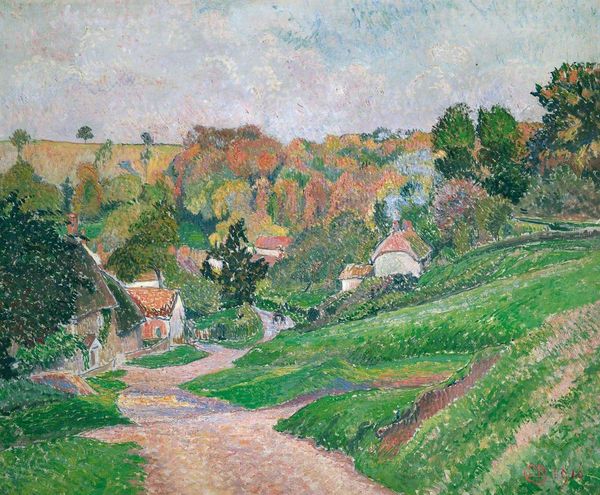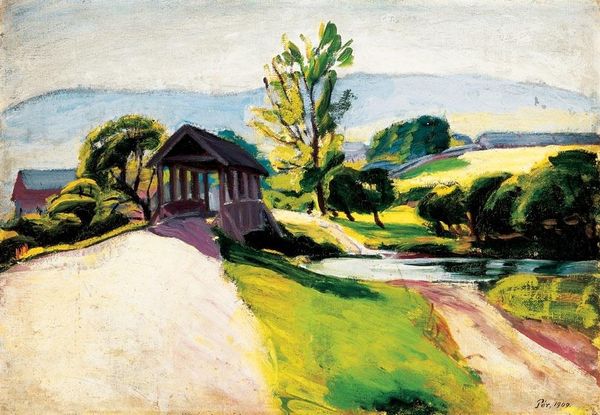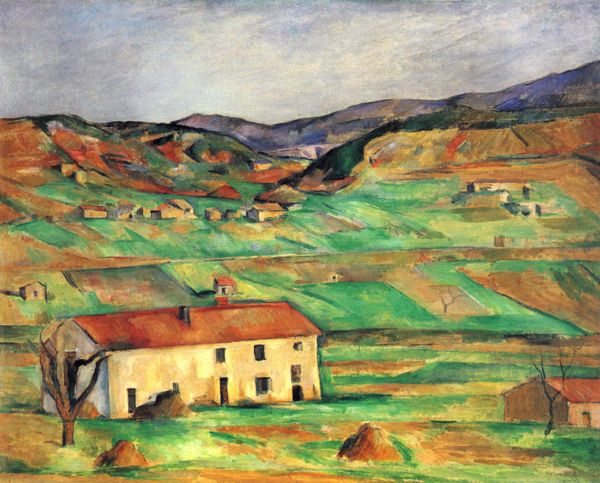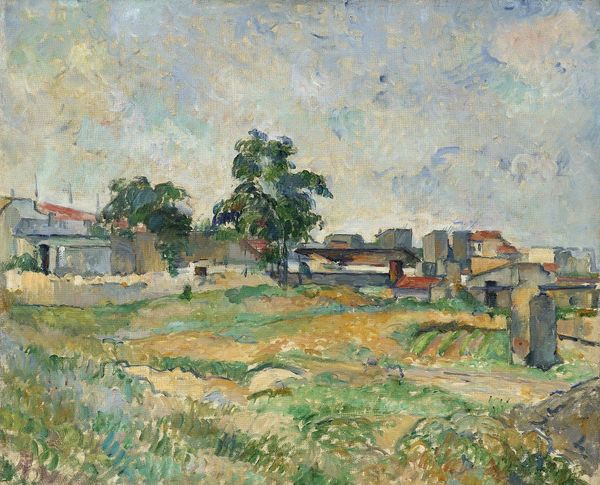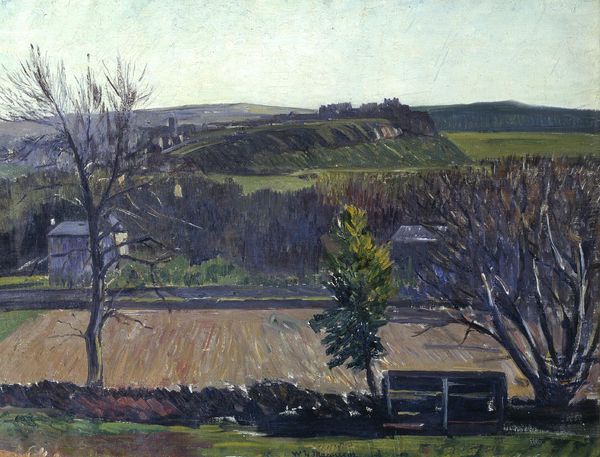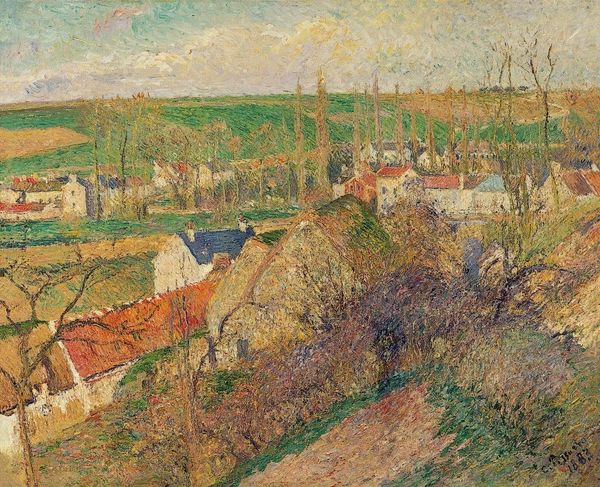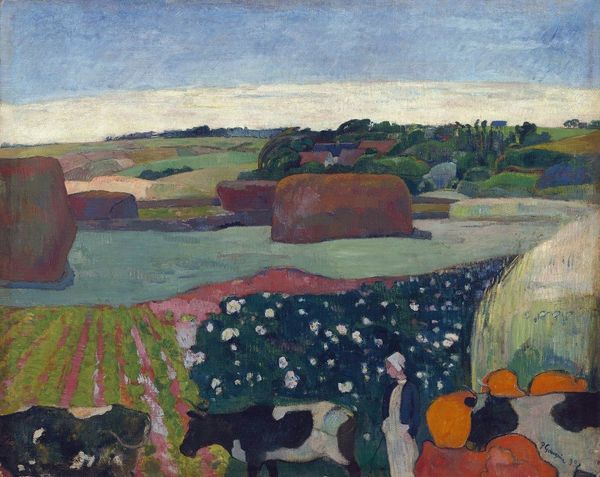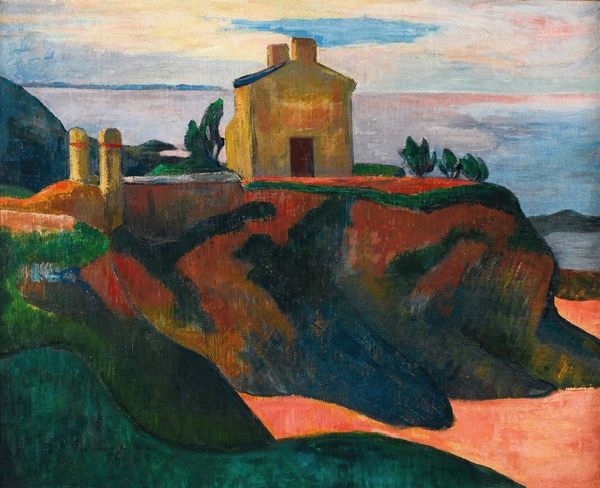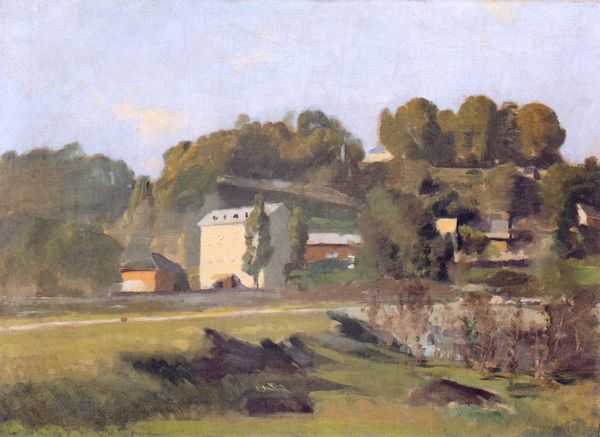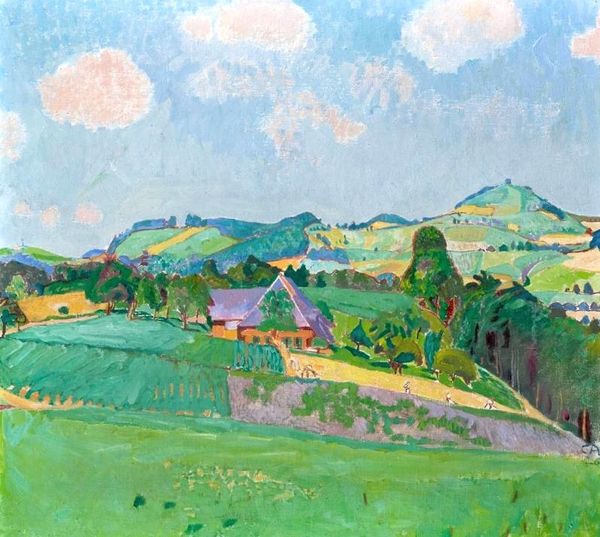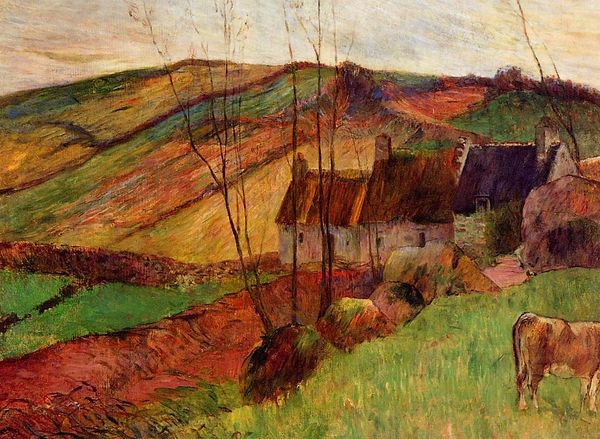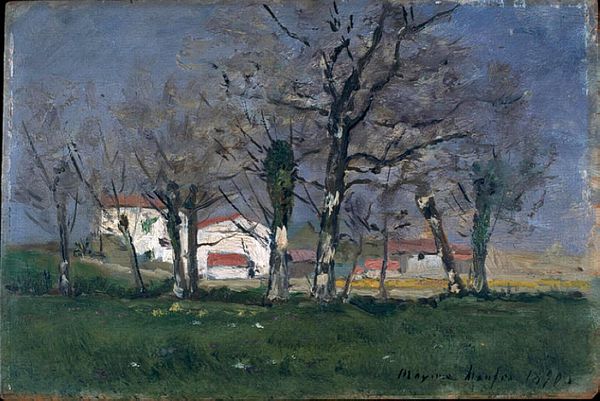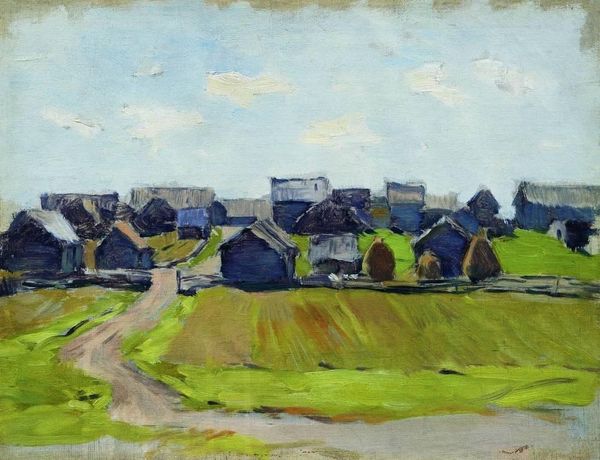
painting, oil-paint
#
painting
#
oil-paint
#
landscape
#
oil painting
#
folk-art
#
naive art
#
post-impressionism
#
expressionist
Copyright: Public Domain: Artvee
Curator: Gauguin’s "Landscape at Le Pouldu," painted in 1890, presents a captivating view rendered in oil paint. What’s your initial response to this particular canvas? Editor: Oh, wow, there's something almost childlike about the way this landscape is depicted. The colors feel raw, the shapes simplified. There's an inherent honesty, maybe even vulnerability in how it’s been rendered. Curator: It’s interesting you say that, as it was produced during a time of huge artistic experimentation. This landscape embodies a shift away from the precise realism championed by academic painters. We observe Gauguin's departure toward more abstract representation, emphasizing emotional impact over topographical accuracy. The materiality is front and center. Editor: I feel the pull. This flattened perspective gives me an overwhelming sense of space, yet also closes the view in the same instant, like the scene has folded in on itself. Almost makes me a little anxious if I sit with the perspective shift too long. Does this flattening of reality come from the materials, the colors that don't seem naturalistic? I think about paint quality all the time. Curator: It certainly informs the texture and visual plane, but consider that this location, Le Pouldu, was a popular gathering place for artists seeking to challenge the established Salon system. Gauguin lived and worked among rural communities, finding inspiration in folk art traditions and applying his own stylistic evolutions towards abstraction, like the simplified shapes you've spotted, alongside arbitrary coloring decisions. The material choices enable that expressive output. Editor: Ah, yes, the color. That cerulean splodge among the rocks and red path, there’s no realistic light source casting a blue tint, I suppose it’s like he’s chosen to make paint the central medium visible here, more than landscape at all. The forms he renders seem almost a means to investigate the nature of applying pigments to canvas! Curator: Precisely, challenging any assumptions about surface and intention. Gauguin isn't interested in pure representation but rather in the interaction of paint, labor and vision—material actions used in an expressive register, removed from convention. Editor: What a perspective. Thanks. So, it becomes about *why* he chooses this simplified method to portray this little corner of Brittany. Well, next time I feel pulled in several emotional directions simultaneously, perhaps it’s not confusion at all but artistic truth expressed! Curator: Absolutely. Gauguin invites us to consider not just what we see, but how art's materials themselves reshape our perception of reality.
Comments
No comments
Be the first to comment and join the conversation on the ultimate creative platform.
